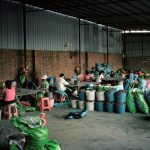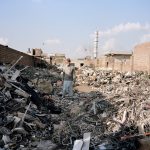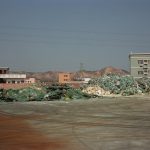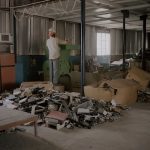Toxic graveyards
 Disturbing photos of the toxic graveyards where your old gadgets go to die
Disturbing photos of the toxic graveyards where your old gadgets go to die
By Melia Robinson From Business Insider
In 2014, the world produced more than 40 million metric tons of discarded electronic goods, or e-waste, according to a report from the United Nations research arm.
Many of our once-treasured gadgets end up in landfills where young men work in hazardous conditions to sort, recycle, and dispose of them.
Photographer Valentino Bellini documented the world’s largest e-waste hubs in his series called The BIT ROT Project, which you can read more about here: http://www.bitrotproject.com/
Every few months, consumers hit the streets with the latest, fastest, smartest, and slickest gadgets in their pockets. But what happens when those shiny new toys go out of style?
Qingyuan, ChinaValentino Bellini
Some end up in “e-waste” dumps like this one, in Lahore, Pakistan. In 2014, the world generated 41.8 million metric tons of e-waste, according to United Nations University.
Lahore, PakistanValentino Bellini
Source: United Nations University
It is believed that less than one-sixth of the e-waste was properly recycled.
In some countries, legislation requires major corporations to collect, recycle, and dispose of e-waste in an environmentally responsible way. But these processes can be expensive.
Lahore, PakistanValentino Bellini
Many companies opt to cheaply (and illegally) export their e-waste to developing countries with less stringent waste removal laws. Dumps form, contaminating the earth with toxic substances such as lead, mercury, arsenic, and flame retardants.
Agbogbloshie, Accra, GhanaValentino Bellini
The workers hold onto the items made with valuable materials.
In Agbogbloshie, Ghana — a former wetland turned toxic electronics graveyard — young men make a living of about $2.50 a day sorting through the rubbish with their bare hands.
Agbogbloshie, Accra, GhanaValentino Bellini
Heaps of e-waste are set on fire or doused with chemical solvents in order to burn off the rubber and plastic so workers can harvest the valuable materials inside. Televisions and PCs are cracked open with rocks and tools for their copper, which may pay for food.
Agbogbloshie, Accra, GhanaValentino Bellini
The living conditions in the e-waste hubs are vicious. Workers in Agbogbloshie, Ghana, make shelters out of scraps and waste inside the parameters of the landfills.
Agbogbloshie, Accra, GhanaValentino Bellini
Health concerns are dire. Breathing in toxic fumes day after day, many workers reportedly die of cancer and other illnesses by the time they’re 20 years old.
Agbogbloshie, Accra, GhanaValentino Bellini
Source: The Guardian
In Guiyu, China, some 80,000 of 130,000 residents work in the dumps, according to a 2012 local government estimate. Metal contamination has turned the air and water toxic, and many locals suffer substantial digestive, neurological, respiratory, and bone problems.
Guiyu, ChinaValentino Bellini
Source: AFP
The e-waste hubs vary in scale and the size of their workforce. This Qingyuan, China-based company has been extracting metals from e-waste for more than 10 years.
Qingyuan, ChinaValentino Bellini
In the same region, a family-run operation focuses on stripping refrigeration systems and high-voltage electricity cables. Workers get paid based on the weight of recycled materials they handle in a day.
Qingyuan, ChinaValentino Bellini
In Old Seelampur, New Delhi, India, a worker boils transformers and inductors in a metal pot in his home. Sometimes the work is carried out in the yard.
Old Seelampur, New Delhi, IndiaValentino Bellini
Bellini believes most major IT corporations are culprits in the world’s e-waste crisis.
Old Seelampur, New Delhi, IndiaValentino Bellini
“[They] are guilty from the moment they design their products to last less and less, for obvious commercial reasons,” Bellini said.
Lahore, PakistanValentino Bellini
“They are guilty because they use materials and highly toxic substances in their products, despite [the fact that] today’s technology allows for substitution with less hazardous or even harmless materials.”
Kancheepuram District, Tamilnadu, IndiaValentino Bellini
“And they are guilty when, at the end of the life-cycle of the product, they do not take charge of its disposal,” Bellini said.
Lahore, PakistanValentino Bellini
Researchers expect the volume of e-waste to increase 21% to 50 million metric tons in 2018.
New Territories, Hong KongValentino Bellini
For more on this story go to: http://www.businessinsider.com/photos-of-e-waste-in-developing-countries-2017-6/#every-few-months-consumers-hit-the-streets-with-the-latest-fastest-smartest-and-slickest-gadgets-in-their-pockets-but-what-happens-when-those-shiny-new-toys-go-out-of-style-1





















